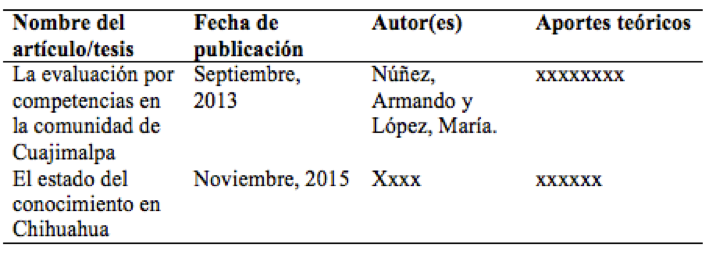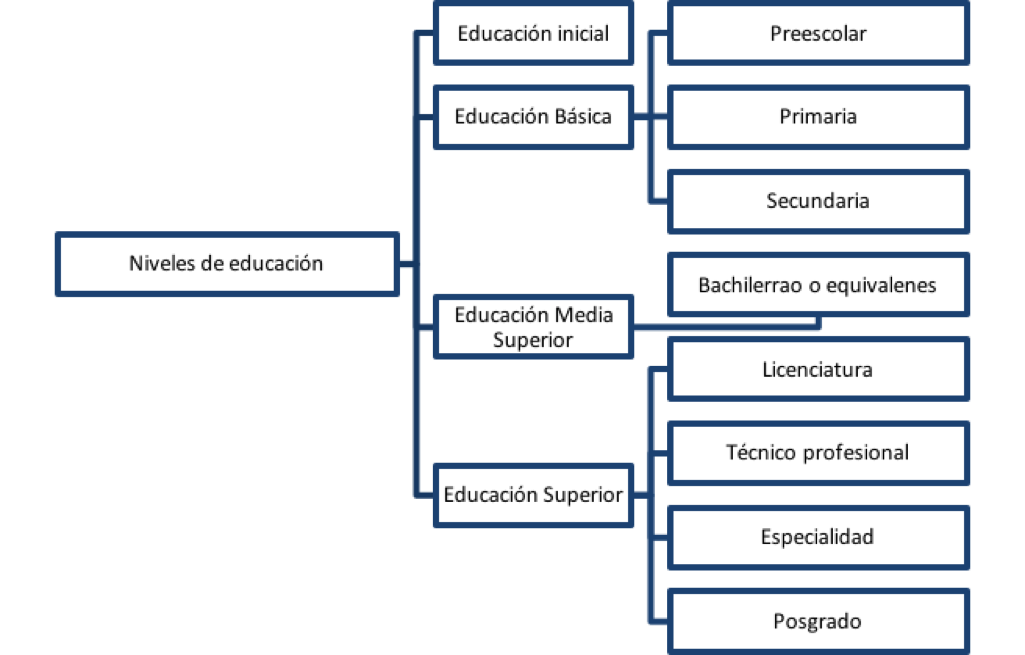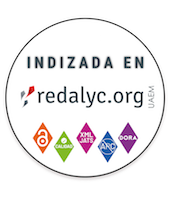Revista adherida a la Declaración de San Francisco
Submissions
Submission Preparation Checklist
As part of the submission process, authors are required to check off their submission's compliance with all of the following items, and submissions may be returned to authors that do not adhere to these guidelines.- It has a file that corresponds to the cover page, where the title of the work, name of the author or authors (maximum three), affiliation and position they hold, institutional address, telephone and email are recorded.
- It has the Originality Declaration duly completed and signed by the author or authors, according to the format indicated in the section of the same name.
- It has the proposal file in Microsoft® Word® or compatible format and has ensured that it is free of data that identifies the author or authors.
Author Guidelines
- Characteristics of contributions
- Publication languages
- Editing rules
- List of references
- Sending contributions
- Cession of rights
- Declaration of originality
- Copyright notice
Characteristics of contributions
- Title of the report
- Title in the Spanish language
- Abstract in a single paragraph, a maximum length of 200 words, that indicates the most relevant aspects of the work: thematic, theoretical support, methodological approach, main findings, and most relevant conclusions. It should not contain formulas, citations, or author references.
- Keywords, maximum five, arranged alphabetically, that are not included in the title and that allude to complete ideas related to the content of the work (it is recommended to use thesauri).
- Resumen, translation of the abstract into the Spanish language.
- Palabras clave, keywords in the Spanish language.
- Text of the contribution, where the topic, problem, and objects of study are presented, review of the relevant literature, the methodology used, results and research findings; as well as the conclusions or final considerations. These aspects do not necessarily have to appear as subtitles.
- All those that have been cited in the body of the work and with the complete data according to the type of source must be shown (see section Reference list).
- Title of the essay
- Title in the Spanish language
- Abstract in a single paragraph, a maximum length of 200 words, that indicates the most relevant aspects of the work: subject, theoretical support, the methodology for analysis, results, and conclusions. It should not contain formulas, citations, or author references.
- Keywords, a maximum five, arranged alphabetically, that are not included in the title and that allude to complete ideas related to the content of the work (it is recommended to use thesauri).
- Resumen, translation of the abstract into the Spanish language.
- Palabras clave, keywords in the Spanish language.
- Text of the contribution, where the introduction or presentation of the topic is presented, purposes of the text, review of the relevant literature, the main thesis of the author, and conclusions. These aspects do not necessarily have to appear as subtitles.
- All those that have been cited in the body of the work and with the complete data according to the type of source must be shown (see section Reference list).
- Title
- Title in the Spanish language
- Cover image of the reviewed work in jpg or png format, accompanied by the reference with the data corresponding to the type of source and serial number (ISBN or ISSN). Example of a book: Surname / s of the author, initial / s of the name / s. (year). Book title in italics. City, country: editorial. ISBN: xxx-xxx-xxxxx-x-x.
- Critical analysis of the content of the reviewed work, so that it represents an invitation to read it, highlighting its main characteristics and establishing evaluations or relationships with problems, works or discussions in the field of study. The subtitles are of the author's free choice, as well as the use of references.
Publication languages
- Spanish.
- English.
- Portuguese.
Editing rules
- The works must be sent in Microsoft® Word® or compatible format without any type of information that alludes to the author or authors. The “Archive / Properties” option should be reviewed to eliminate the author's name that the computer team automatically assigns to all generated documents.
- A cover page with the name of the author or authors of the work (maximum three), institutional affiliation, and position, address, telephone, and email must be included in a separate file.
- Times New Roman 12 point font will be used for the general text and titles, except for the explanatory notes in the margin and in the notes on tables and figures that are in size 11. The use of footnotes will be explanatory, serving to expand or illustrate, but not to indicate references.
- For the citation and organization of references, some criteria of the APA Format (Publications Manual of the American Psychological Association, third edition translated from the sixth in English) apply.
- The spacing will be 1.5, justified alignment, without double space between paragraphs.
- Include the document of the Declaration of Authenticity dduly completed and signed by the author or authors.
- Heading level one: centered, capitalized, and bold. It is used in the name of the main sections (title, abstract, resumen, introduction, methodology, results, conclusions, references, annexes, etc.). Example:
- Heading level two: Enunciated type, 12-point letter, left-aligned and bold, with no ending period. Example:
- Heading Level Three: Enunciated type, 12-point letter, bold italics, left-aligned. Example:
- Heading level four: Enunciated type, 12-point letter, indented, bold, left-aligned, and with a period. Example:
- Heading level five: Enunciated type, 12-point letter, indented, in italics, left-aligned, and with a period. Example:
- Quotations less than 40 words are included in the continuous text and in quotation marks. Those that exceed 40 words (approximately 4 lines) should be placed in block quotation format, without quotation marks, with an a paragraph indent and with the reference to the page number (p.) Or pages (pp.) Where the information appears in the source consulted. Example: [Vázquez & Ortiz, 2018, p. 139], [Guzmán 2019, pp. 209-210].
- Paragraphs, where a source's information is paraphrased, do not include a page number. Example: "As González-Moreno (2018) points out, communication is very important ..." or "Some authors have studied dance (De las Heras, 2018)".
- Only in cases where the author uses the two surnames joined by a hyphen, it is preserved that way in the quotation. Example: (González-Moreno, 2018). In the rest of the cases, the first surname of the author or authors is used exclusively. Example: Gaete (2020) or García, Cortés & Rodríguez (2020).
- The citations of four authors or more appear with the last name of all the authors in the first citation. From the second one, only the last name of the first one is included, followed by the Latin abbreviation et al. Example: First appointment (Aguirre, Hernández, Pérez & Trujillo, 2015), second appointment (Aguirre, et al., 2015) or Aguirre et al. (2015).
- Historical archives and institutions are cited with their acronyms and the full name is included the first time in the list of references and the abbreviations in the following ones. Example: in a quote (Secretaría de Educación Pública [SEP], 2011) and references “SEP. [Secretaría de Educación Pública]. (2011) …”
- The use of abbreviations p. (page) or pp. (pages) with par. (paragraph). Example: (Castellanos, 2018, par. 5). If the text is very long and lends itself to confusion, you can refer to the corresponding section and then point to the paragraph. Example: (Castellanos, 2018, Comments section, par. 5).
- Interview appointments are made in the following format: (First name initial, first name of the interviewee, type of communication -personal or telephone-, day of the month of year). Example: (F. Ruiz, personal communication, April 18 of 2017).
- Abbreviations such as Ibid., Ibid., Op. cit., etc.
-
In cases where the source does not have a publication date, the abbreviation s.f. should be used. Example: Castellanos (s.f.) or (Castellanos, s.f.). In cases where a book or chapter does not indicate its publisher, the abbreviation s.n. should be used. in your reference, in the place that would occupy the name of the publisher.
-
In articles published in Spanish and Portuguese, the use of the & symbol in citations or list of references should be avoided. It only applies to references consigned completely in English.
- They must be numbered consecutively and accompanied by a descriptive title at the top for the tables and the bottom for the figures. Its content must be fair and necessary to communicate to the reader what is desired.
- Tables must be concise and have a direct link with the content of the work, although their design allows them to be understood independently of the text of the document.
- Figures (graphs, diagrams, maps, drawings, photographs, etc.) must be directly related to the content of the work. It is suggested to use a high resolution * 300 dpi * jpg format. The following recommendations are presented for both types of elements:
- Identify with a table or figure and its consecutive number: Table 1, Figure 1, etc., followed by the title that describes it centered and in normal letters (size 12).
- They take up the necessary space and appear centered.
- They are inserted in the text of the document and only those of a secondary nature are presented in the annexes.
- They must be cited in the corresponding paragraph directly ("as shown in Table 3, the results show that ...") or indirectly ["The relationship between school dropout and family income level is high (see figure 5) ”].
- In all cases, the source must be indicated. When it comes to an original creation by the author, it sits that way. Examples: "Source: Correra and Fourzán, 1989" or "Source: Personal construction."
- The descriptor titles (Sources and Notes) are in italics.
- Explanatory notes must appear at the foot of the table or figure, with justified alignment and in font size 11. Example:


List of references
- ALL sources cited in the body of the work must be listed. It is the responsibility of the author or authors to verify in detail so that each cited source appears duly recorded in the references and that each reference is cited at least once in the body of the work.
- For the same author, complete data is obtained. The name is NOT substituted by using a long hyphen. When two or more jobs correspond to the same year, letters are assigned according to the alphabet. Example: "Maldonado, J. (2015a) ...", "Maldonado, J. (2015b) ...", "Maldonado, J. (2015c) ...", etc. In appointments it is recorded in the same way. Example: Maldonado (2015a), (Maldonado, 2015c), etc.
- The PDF file of a printed book that is available on the internet is NOT considered as an electronic book. This category corresponds only to works in electronic format, for example, eBook.
- The organization of the fonts will be alphabetical, French indentation will be used and will contain all the elements indicated in the APA Manual of Style. The following examples can be used as a guide:
Submission of contributions
- Access the “registration” option and provide the requested information. For the username, it is recommended to use only lowercase letters, hyphens or numbers. Example: estefania_dominguez, ricardo86, etc.
Cession of rights
The author or authors retain the rights to their work at all times and only grant permission to the journal for their material to be disseminated in the printed and electronic version of the journal, as well as in the databases that incorporate it. They grant said authorization once the final version of the document is approved. The authorization format will be provided to the author or authors once the acceptance of the proposal is notified.
Declaration of originality
- The proposal is the product of the direct contribution of its authors.
- Unpublished. The work has not been published by any means, either print or electronic.
- Simultaneous application. The work is not being submitted in parallel for possible publication in another medium.
- Authorship credits. All references already published are duly included in the list of references.
- Respect for property rights. In the necessary cases, there are the authorizations of those who have the economic rights of the mentioned works.
- Legal responsibility. They assume responsibility for any litigation or claim related to intellectual property rights, exonerating IE Revista de Investigación Educativa de la REDIECH and the Red de Investigadores Educativos Chihuahua AC.
Copyright notice
- For public purposes.
- Without commercial purposes.
- That the authorship of the work is recognized and its origin is cited with complete information: Surname / s of the author, initial / s of the name / s. (year of publication). Article title. Name of the magazine, volume (issue number), the initial page of the article-final page of the article. DOI in web page format (suggested format according to APA style).
Articles
Se trata de investigaciones empíricas con sustento teórico que posibiliten un avance en la comprensión del fenómeno en estudio; reportes de intervenciones educativas, estudios evaluativos o diagnósticos que muestren una aproximación teórico-metodológica innovadora, que tengan un amplio espectro -estudios nacionales, internacionales o que valoren otros resultados-, revisiones: estados del arte o estados de conocimiento sobre un tema. No se aceptan protocolos o anteproyectos de investigación. Las características específicas para la presentación de este tipo de propuestas pueden consultarse en la sección de Envíos.
|
√ Abrir envíos |
√ Indizado |
√ Evaluado por pares |
Ensayos
Este tipo de artículos son reflexiones sobre temas de investigación educativa, que contribuyan a la reformulación o conceptualización de un problema, tema o metodología, que se ubiquen en el debate actual y manejen una bibliografía pertinente y actualizada. Las características específicas para la presentación de este tipo de propuestas pueden consultarse en la sección de Envíos.
|
√ Abrir envíos |
√ Indizado |
√ Evaluado por pares |
Reviews
Se dedican al análisis y discusión sobre el contenido de un documento que por su temática sea vigente y de interés para el campo de la investigación educativa. Se da preferencia a las que se refieren a publicaciones actuales y a las que se basan en el análisis profundo de la obra, de manera que representan una invitación a su lectura. Las características específicas para la presentación de este tipo de propuestas pueden consultarse en la sección de Envíos.
|
√ Abrir envíos |
√ Indizado |
x Evaluado por pares |



















